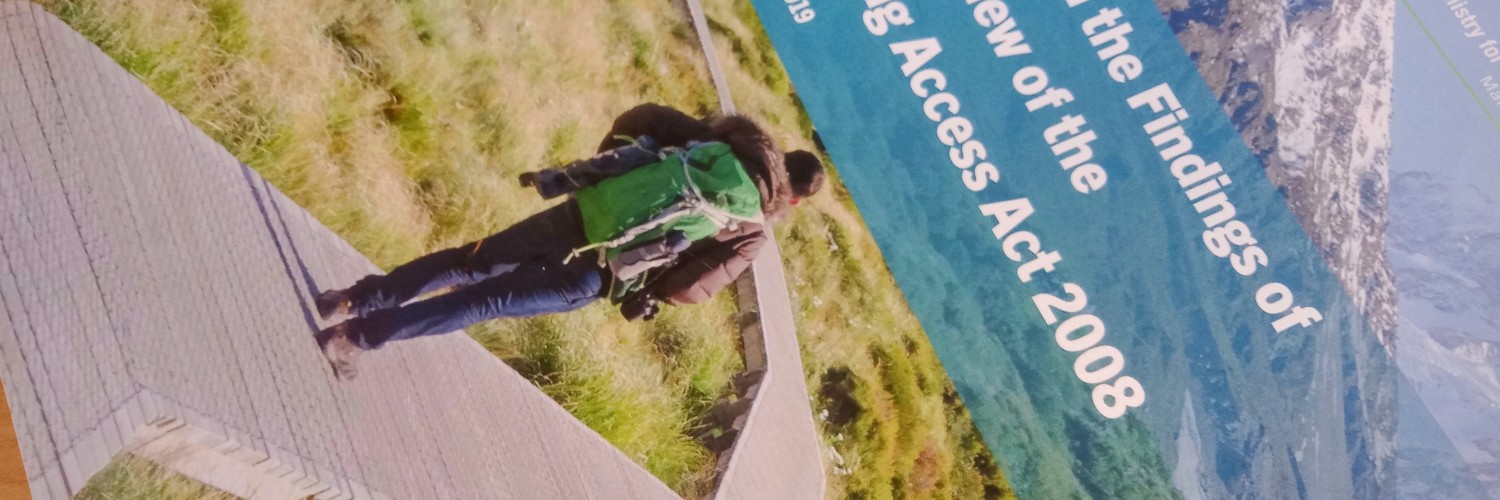Appendix C – Relevant provisions of the Walking Access Act 2008
Purpose
Excerpt from Section 3 of the Walking Access Act 2008:
3 Purpose
The purpose of this Act is —
-
to provide the New Zealand public with free, certain, enduring, and practical walking access to the outdoors (including around the coast and lakes, along rivers, and to public resources) so that the public can enjoy the outdoors; and
-
to establish the New Zealand Walking Access Commission with responsibility for leading and supporting the negotiation, establishment, maintenance, and improvement of —
-
walking access (including walkways, which are one form of walking access) over public and private land; and
-
types of access that may be associated with walking access, such as access with firearms, dogs, bicycles, or motor vehicles.
-
Objective of Commission
Excerpt from Section 9 of the Walking Access Act 2008:
9 Objective of Commission
The objective of the Commission is to lead and support the negotiation, establishment, maintenance, and improvement of walking access and types of access that may be associated with walking access, such as access with firearms, dogs, bicycles, or motor vehicles.
Functions of Commission
Excerpt from Section 10 of the Walking Access Act 2008:
10 Functions of Commission
-
In meeting its objective under section 9, the Commission has the following functions:
-
providing national leadership on walking access by —
-
preparing and administering a national strategy; and
-
co-ordinating walking access among relevant stakeholders and central and local government organisations, including Sport and Recreation New Zealand:
-
-
providing local and regional leadership on, and co-ordination of, walking access in collaboration with local authorities:
-
compiling, holding, and publishing maps and information about land over which members of the public have walking access:
-
providing advice on walking access to the Minister or any other person:
-
facilitating resolution of disputes about walking access, including initiating negotiations about disputed issues, mediating disputes, and referring disputes to a court, tribunal, or other dispute resolution body:
-
negotiating with landholders to obtain walking access (including walkways, which are one form of walking access) over public or private land:
-
negotiating rights in addition to any walking access that is obtained, such as the right of access with firearms, dogs, bicycles, or motor vehicles:
-
administering a fund to finance the activities of the Commission, or any other person, in obtaining, developing, improving, maintaining, administering, and signposting walking access over any land:
-
receiving and managing private funding, contributions, or sponsorship for the promotion of walking access:
-
researching, educating the public about, and participating in topics and programmes related to walking access:
-
developing, promoting, and maintaining the code of responsible conduct:
-
administering walkways under this Act, with planning and supervision focused at a local level:
-
monitoring the compliance with, and enforcement of, this Act in relation to walkways.
-
-
If the Commission is aware that a site is culturally sensitive, it must consider whether it is appropriate to publish a map or information indicating the location of the site before doing so.
Consideration of priorities for walking access over private land
Excerpt from Section 11 of the Walking Access Act 2008:
11 Consideration of priorities for walking access over private land
In considering its priorities for negotiating walking access over private land, the Commission must take into account the desirability of walking access —
-
over land on the coast where there is not already walking access over the foreshore or the land adjoining the foreshore on its landward side:
-
over land adjoining rivers or lakes where there is not already walking access over the land:
-
to parts of the coast, rivers, or lakes to which there is not already walking access:
-
being continuous over land adjoining the coast, rivers, or lakes (for example, by replacing walking access that has become obstructed by being submerged beneath a body of water):
-
to conservation areas (within the meaning of section 2(1) of the Conservation Act 1987):
-
to areas of scenic or recreational value:
-
to sports fish (within the meaning of section 2(1) of the Conservation Act 1987) and game (within the meaning of section 2(1) of the Wildlife Act 1953).

